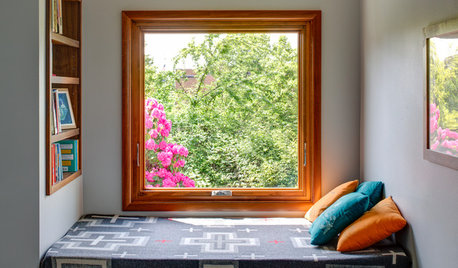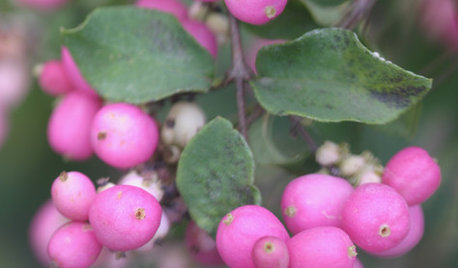What is compost doing during the winter?
bibbus 7b
11 years ago
Related Stories

HOUSEKEEPING10 Chores You Can Whip Through During Commercials
Use ad time for getting tasks done, and it’s like fast-forwarding your house into cleanliness
Full Story
HOUSEKEEPINGOutdoor Home Prep to Do Before Hard Winter Hits
Avoid cracking, rusting and rotting during freezes by taking care of these tasks now
Full Story
GARDENING GUIDESGet on a Composting Kick (Hello, Free Fertilizer!)
Quit shelling out for pricey substitutes that aren’t even as good. Here’s how to give your soil the best while lightening your trash load
Full Story
HEALTHY HOMEWhat to Know About Controlling Dust During Remodeling
You can't eliminate dust during construction, but there are ways to contain and remove as much of it as possible
Full Story
LIFE10 Ways to Work Through Grief Triggers During the Holidays
A year after losing her sister, she was facing another holiday. Here’s how one woman learned to find joy again
Full Story
LIFEHow to Recharge Your Soul During the Change of Seasons
Sit down, breathe deeply and spend a little extra time making your home a place of calming comfort
Full Story
LIFE9 Timely Home Projects to Tackle During School Hours
While the kids are off (hopefully) learning, create your own list of accomplishments with these opportune home improvement projects
Full Story
LIFESimple Pleasures: A Long Winter’s Nap
This time of year we can always use a little extra rest. Make it easy with these ideas for daytime napping
Full Story
GARDENING GUIDESGarden Myths to Debunk as You Dig This Fall and Rest Over Winter
Termites hate wood mulch, don’t amend soil for trees, avoid gravel in planters — and more nuggets of garden wisdom
Full Story
LANDSCAPE DESIGN5 Berry-licious Shrubs to Plant Now for Winter Interest
Showy color during snow season? You bet. These shrubs will wake up a garden with colorful berries when other plants are asleep
Full StorySponsored
Leading Interior Designers in Columbus, Ohio & Ponte Vedra, Florida
More Discussions







Hammerga
Kimmsr
Related Professionals
Glendora Landscape Architects & Landscape Designers · Pottstown Landscape Contractors · Dallas Landscape Contractors · Estelle Landscape Contractors · North Canton Landscape Contractors · Porterville Landscape Contractors · St. Louis Landscape Contractors · Twin Falls Landscape Contractors · Four Corners Landscape Contractors · Boise Decks, Patios & Outdoor Enclosures · Brentwood Decks, Patios & Outdoor Enclosures · Fairfax Decks, Patios & Outdoor Enclosures · Frederick Decks, Patios & Outdoor Enclosures · Riverside Decks, Patios & Outdoor Enclosures · West Chester Decks, Patios & Outdoor Enclosuresrobertz6
bibbus 7bOriginal Author
jonfrum
poaky1
jbann23
armoured
chickencoupe
tnjdm
Kimmsr
bibbus 7bOriginal Author
Kimmsr
toxcrusadr
robertz6